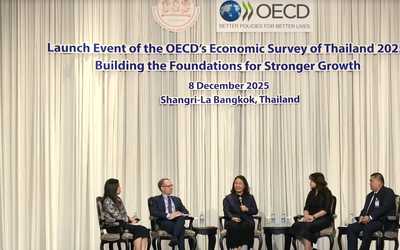Over the past 25 years, Thailand’s flexible inflation targeting framework has generally supported macroeconomic stability, helping to anchor inflation expectations while granting the central bank the flexibility to manage risks to growth and financial stability. However, recent developments such as volatile inflation from supply-side shocks, persistent household debt, structural growth challenges, geopolitical shifts and global uncertainty now require a critical review of the framework’s targets, strategies, tools, and communications.
- Reconsidering the inflation target: which inflation measure to target, point versus range targeting, appropriate target level, and horizon.
- Designing optimal monetary policy in the context of supply-driven inflation, financial stability concerns, and heightened uncertainty.
- Assessing the effectiveness, trade-offs, and interactions of policy instruments including monetary policy, exchange rate management, capital flow measures, and macroprudential policies.







